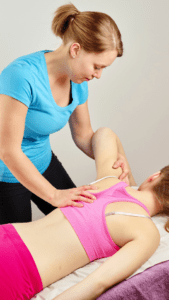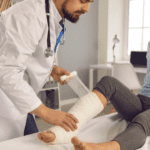What is Osteopathy?
In the realm of healthcare, various approaches exist to facilitate the body’s natural healing process. Osteopathy, often misunderstood or conflated with other medical practices, stands as a distinct holistic approach to rehabilitation. Osteopaths, or manual osteopathic practitioners, focus on hands-on therapies, emphasizing the body’s musculoskeletal system and its connection to overall health and wellness.
Understanding Osteopathy
Osteopathy is a form of complementary medicine that centers around the principle that the body’s structure and function are interrelated. Osteopaths believe that when the body’s musculoskeletal system is in balance, it has the inherent ability to heal itself. This comprehensive approach involves assessing and treating the body as a whole, rather than isolating specific symptoms.
The Role of Osteopathy in Rehabilitation
In the context of rehabilitation, osteopathy plays a crucial role in helping individuals recover from injuries, manage chronic pain, and improve overall mobility. Osteopaths utilize a range of manual techniques.These include soft tissue stretching, joint manipulation, and mobilization, to address musculoskeletal issues that may be hindering the body’s natural healing mechanisms.
By identifying areas of tension, restricted movement, or misalignment, osteopaths aim to restore balance and functionality to the body. This not only aids in alleviating pain but also contributes to improved circulation, reduced inflammation, and enhanced overall well-being.
Exercises and Stretches for Home Rehabilitation
Osteopaths frequently integrate exercise regimens and personalized stretching routines into their treatment plans. These exercises aim to rehabilitate injuries, strengthen weakened areas, and improve flexibility and mobility. By actively involving patients in their recovery process, osteopaths equip them with the tools and knowledge necessary for self-care, facilitating a smoother path to recovery and reducing the likelihood of recurring issues. This proactive approach not only aids in the immediate rehabilitation of injuries but also promotes long-term health and resilience. The overall goal of the treatment plan is to create a sense of autonomy and self-efficacy among patients.
Education
To ensure a seamless transition between in-clinic treatments and home care, osteopaths guide their patients with clear instructions and demonstrations. Moreover, they educate individuals about the importance of maintaining a healthy lifestyle, including proper nutrition, hydration, and ergonomic practices. This complements and enhances the rehabilitation process.
By fostering an open line of communication, osteopaths encourage patients to share their progress, concerns, and any challenges faced while performing the prescribed exercises at home. This approach encourages a sense of accountability and ensures that the rehabilitation plan can be adjusted or modified as needed for optimal results.





